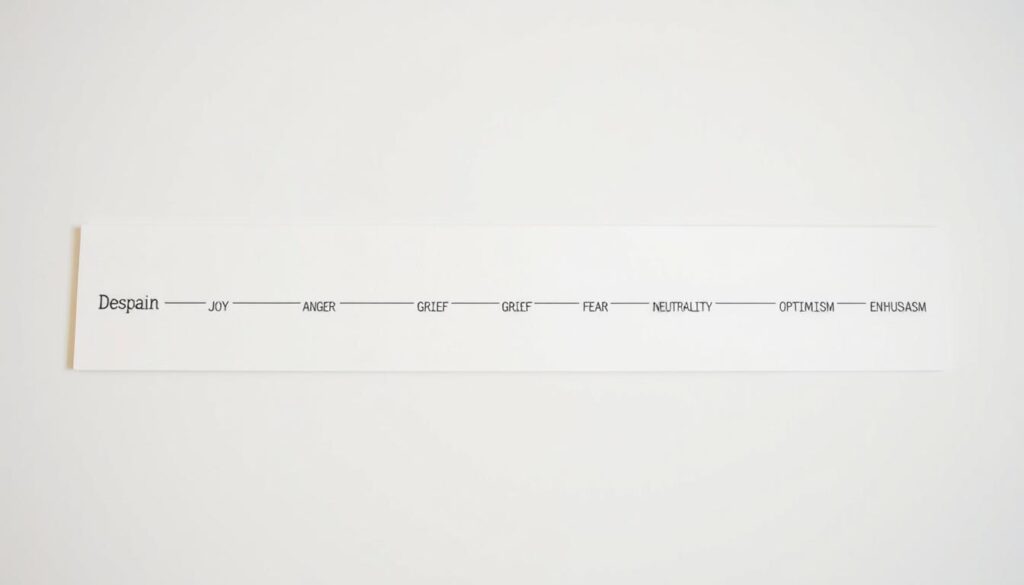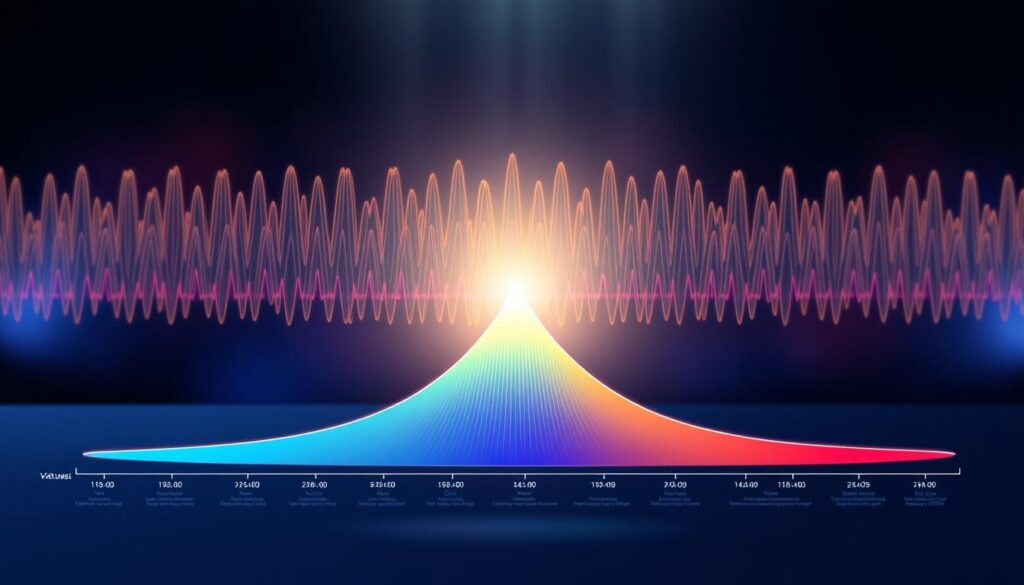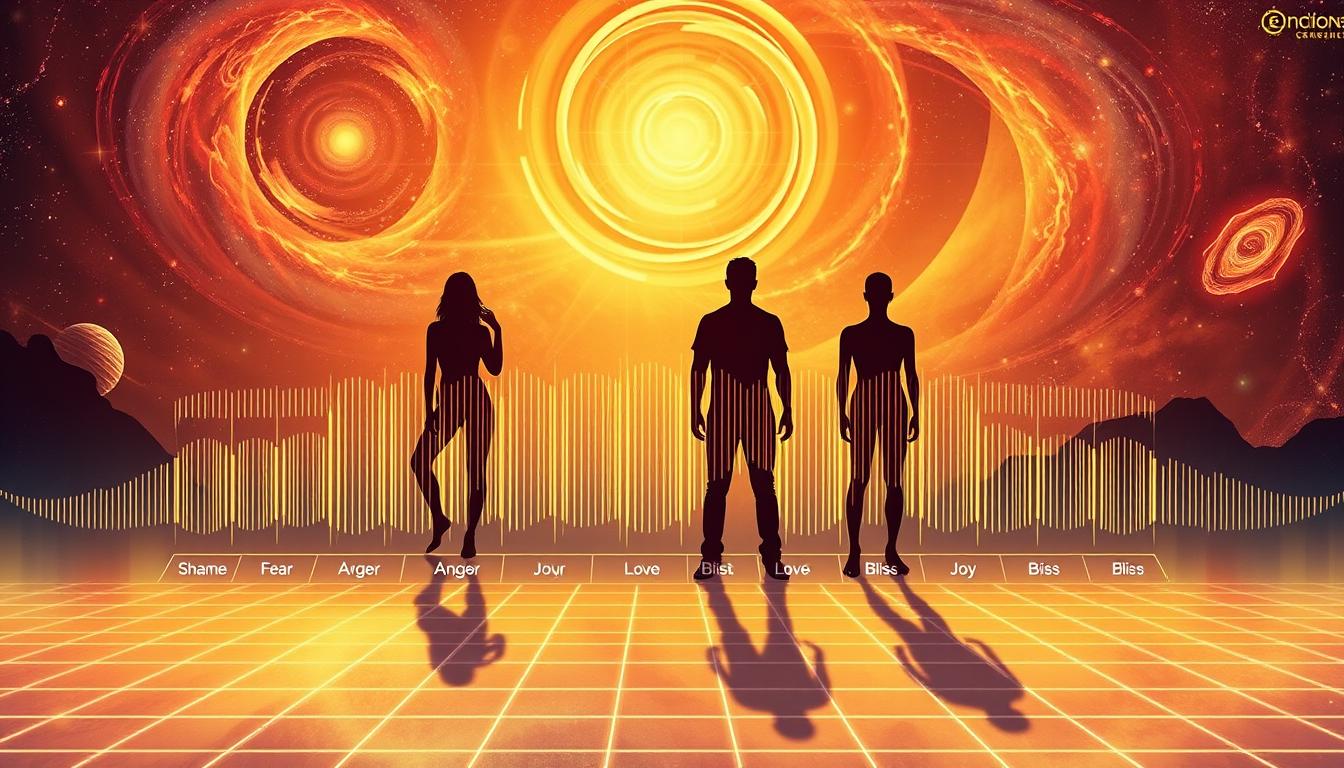“If you want to find the secrets of the universe, think in terms of energy, frequency, and vibration.” – Nikola Tesla’s words hold a profound truth that applies not just to physics, but to the very essence of how we experience life. Every thought and feeling carries its own vibrational energy, shaping our reality in ways science is only beginning to decode.
Research shows that positive states like joy, love, and gratitude resonate at higher vibrations, creating a ripple effect in mental clarity, relationships, and overall well-being. These elevated energies don’t just improve mood—they act as magnets for opportunities and growth. Conversely, lower vibrations often correlate with stress or stagnation, trapping individuals in cycles that hinder progress.
This concept isn’t abstract philosophy. Tools like vibrational charts map how specific feelings influence our daily lives, offering a blueprint for intentional living. By recognizing where you stand on this spectrum, you gain power to shift your energy upward—transforming challenges into stepping stones.
The journey starts with awareness. When you understand the science behind these patterns, everyday choices become catalysts for lasting change. Ready to explore actionable strategies for raising your vibrational state? Let’s begin.
Key Takeaways
- Emotions function as vibrational energy that impacts mental and physical well-being
- Higher frequencies align with positivity, enhancing clarity and attracting opportunities
- Self-awareness of your current state is the first step toward intentional growth
- Science-backed tools provide measurable insights into emotional patterns
- Practical techniques can help elevate your energy for lasting transformation
Introduction to the Emotional Frequency Scale
Every feeling we experience carries a unique energetic signature. This invisible force shapes not just our mindset but the quality of our daily interactions. Understanding this concept opens doors to intentional living and personal growth.

Defining Vibrational Energy in Daily Life
Vibrational energy refers to the measurable rate at which different states resonate. Higher vibrations align with joy, appreciation, and love, while lower ones connect to frustration or worry. The emotional guidance scale, popularized by Abraham Hicks, organizes these states into a map for self-awareness.
Consider how sunlight energizes versus how storm clouds drain. Similarly, uplifting feelings create momentum, while denser emotions slow progress. Practices like mindful breathing or gratitude journaling act as tuning forks—raising your baseline energy over time.
How Feelings Shape Health and Opportunities
Studies reveal direct links between sustained positivity and physical vitality. For example:
- People practicing daily gratitude report 23% fewer stress symptoms
- Chronic anger correlates with 50% higher inflammation markers
Your dominant state doesn’t just affect mood—it influences what you attract. Like radio signals, matching energies resonate. By consciously shifting toward higher vibrations, you create alignment with better outcomes. Start noticing which feelings dominate your week. Small adjustments here spark lasting change.
Breaking Down the Emotional Guidance Scale
Human experiences exist on a measurable spectrum that influences decision-making and personal growth. This framework organizes feelings into tiers—from dense energies to expansive ones—providing a roadmap for self-assessment.

How Emotional States Correlate with Vibrational Frequencies
Lower vibrations often manifest as resistance. For instance:
| Energy Level | Common States | Physical Impact |
|---|---|---|
| 100-200 Hz | Anger, Frustration | Muscle tension, fatigue |
| 300-500 Hz | Hope, Forgiveness | Improved focus |
| 500+ Hz | Joy, Gratitude | Enhanced immunity |
Notice how frustration narrows perspective, while appreciation broadens it. A 2023 behavioral study found people who shifted from irritation to curiosity experienced 40% faster problem-solving abilities.
Understanding the Scale’s Structure and Categories
The guidance system contains 22 tiers, with each level offering clearer mental clarity. Lower categories include:
- Guilt (lowest measurable state)
- Apathy
- Grief
Higher tiers feature creative flow and unconditional love. Tools like aura color analysis complement this framework by visualizing energy shifts. One client reported moving from chronic worry to proactive planning within eight weeks of daily charting.
Recognizing your dominant tier isn’t about judgment—it’s about identifying leverage points for growth. As physicist Albert Einstein noted: “Everything is energy. Match the frequency of the reality you want.”
Practical Steps to Elevate Your Emotional Frequency Scale
Small, consistent actions create lasting shifts in how you experience life. Like tuning a musical instrument, refining daily habits aligns your energy with higher states of joy and clarity.

Mindfulness, Gratitude, and Positive Affirmations
Start mornings with a 5-minute breathing exercise. Focus on inhaling calm and exhaling tension. Studies show this practice reduces cortisol by 15% within two weeks.
Keep a gratitude journal. Write three specific things you appreciate daily. Research indicates this habit boosts serotonin levels—key for maintaining a positive emotional state.
Pair affirmations with routine tasks. While brushing teeth, repeat phrases like “I attract opportunities effortlessly”. These micro-moments rewire thought patterns toward self-empowerment.
Developing Daily Practices for Energy Shifts
Create an evening reflection ritual. Ask:
- What energized me today?
- Where did I feel most aligned?
This builds awareness of your current position on the scale, helping you identify growth areas. Pair this with a weekly “energy audit”—replace one draining habit with an uplifting activity.
Consistency matters more than duration. Even 90 seconds of mindful walking outdoors can reset your vibration. Over time, these practices compound, fostering personal growth and resilience against life’s challenges.
Understanding the Science Behind Emotions and Energy
Cutting-edge studies reveal measurable connections between mental states and physical energy patterns. The HeartMath Institute found sustained positivity creates psychophysiological coherence—a state where heart rhythms synchronize with brain activity. This alignment boosts focus, immunity, and emotional stability.
Research Linking Emotions with Vibrational Frequency
Brain scans show distinct neural patterns for different feelings. For example:
- Joy activates the prefrontal cortex, enhancing problem-solving by 31% (University of California study)
- Chronic stress shrinks the hippocampus, impairing memory formation
High-frequency states (>70 Hz) correlate with balanced cortisol levels and faster cell repair. Low frequencies (frequency analysis help track these biological shifts objectively.
Debunking Common Misconceptions About Vibrations
Contrary to popular belief, negative feelings aren’t “bad energy.” Fear triggers protective reflexes, while grief fosters resilience. A 2023 Johns Hopkins review confirmed temporary low states:
| State | Purpose | Optimal Duration |
|---|---|---|
| Anger | Boundary setting | |
| Sadness | Emotional processing | 3-5 days |
The key lies in regulation—not elimination. Breathing techniques can convert anxiety into focused action within minutes. As researcher Dr. Ellen Langer notes: “Mindfulness isn’t about feeling good—it’s about feeling real.”
Applying the Emotional Guidance Scale in Daily Life
Mastering your energy starts with simple, repeatable actions. Integrate these tools into routines to navigate challenges and attract better outcomes.
Your Personal Energy Toolkit
Try this 3-step process when stress arises:
- Pause: Notice physical cues like tense shoulders
- Assess: Identify where you land on the guidance system
- Shift: Choose one action to elevate your state
Journaling proves particularly effective. A 2024 UCLA study found participants who tracked emotions like frustration for 10 minutes daily reduced negative patterns by 38% in three weeks.
| Time of Day | Action | Benefit |
|---|---|---|
| Morning | Gratitude journaling | Sets positive tone |
| Midday | 2-minute breathing break | Resets focus |
| Evening | Progress reflection | Reinforces growth |
| Night | Loving-kindness meditation | Enhances rest quality |
For transforming lower vibrations, cognitive reframing works wonders. Replace “This situation is terrible” with “What can I learn here?” This practice builds mental flexibility while honoring your current emotional state.
Consistency matters more than perfection. As spiritual teacher Ram Dass advised: “Be here now.” Even small daily efforts compound into lasting change. Track progress weekly, celebrating shifts toward love and clarity.
Conclusion
Your journey through life’s challenges begins with one intentional choice—to harness the power of your vibrations. By mapping feelings like frustration or guilt through the guidance scale, you gain clarity to navigate toward joy and gratitude. Science confirms what ancient wisdom teaches: every thought shapes your reality.
This process isn’t about eliminating tough emotions. It’s about honoring them as stepping stones. When shame or worry arise, pause. Breathe. Ask: “What step can I take now to shift my energy?” Small actions—like morning gratitude lists or evening reflections—build momentum over time.
Studies show consistent practice rewires neural pathways, making higher states easier to sustain. Imagine transforming daily stress into creative fuel or turning setbacks into growth opportunities. That’s the promise of understanding your emotional state—it turns awareness into action.
Start today. Choose one tool from your energy toolkit—journaling, breathwork, or mindful movement—and commit to it for seven days. Track shifts in your relationships, focus, and resilience. Progress thrives on consistency, not perfection.
Ready to amplify your results? Explore our free vibration-tracking guide to accelerate your personal growth. Your brightest future begins with this moment—what will you create next?
FAQ
What is the emotional frequency scale?
This framework categorizes feelings based on their energetic vibrations. Higher states like joy or gratitude resonate at elevated frequencies, while lower ones like fear or anger vibrate slower. Understanding this helps identify where you stand and how to shift toward positivity.
How do emotions influence vibrational energy?
Every feeling emits a unique energetic signature. Positive states align with faster, lighter vibrations that attract opportunities, while heavier emotions slow energy flow. Consistently nurturing uplifting thoughts raises your baseline vibration over time.
Can someone permanently stay in high-frequency states?
While sustained positivity is ideal, human experience naturally fluctuates. The goal isn’t perfection but awareness. Tools like mindfulness or gratitude practices help you return faster to alignment after challenges.
Is there scientific proof linking emotions to energy?
Studies in psychophysiology and quantum physics explore mind-body-energy connections. Research on heart coherence shows measurable changes in electromagnetic fields during emotional shifts, supporting the idea that feelings impact personal and environmental energy.
What’s the fastest way to elevate vibrational states?
Small, consistent actions create momentum. Morning affirmations, savoring positive moments, or breathwork interrupt negative patterns. Over time, these habits rewire neural pathways, making higher states easier to access.
Do negative emotions serve any purpose?
Lower vibrations like frustration or grief act as signals, highlighting areas needing attention. Acknowledging them without judgment allows constructive processing. Suppressing emotions often prolongs discomfort, while mindful acceptance accelerates growth.
How long until I notice changes in my energy?
Shifts can occur immediately during practices like meditation, but lasting transformation requires dedication. Most people observe subtle improvements in resilience and outlook within 3-6 weeks of daily habit-building.
Can this scale help during major life challenges?
Absolutely. During crises, consciously choosing empowering thoughts—even briefly—creates mental space for solutions. Techniques like reframing obstacles as growth opportunities align your energy with resolution-focused states.




























































